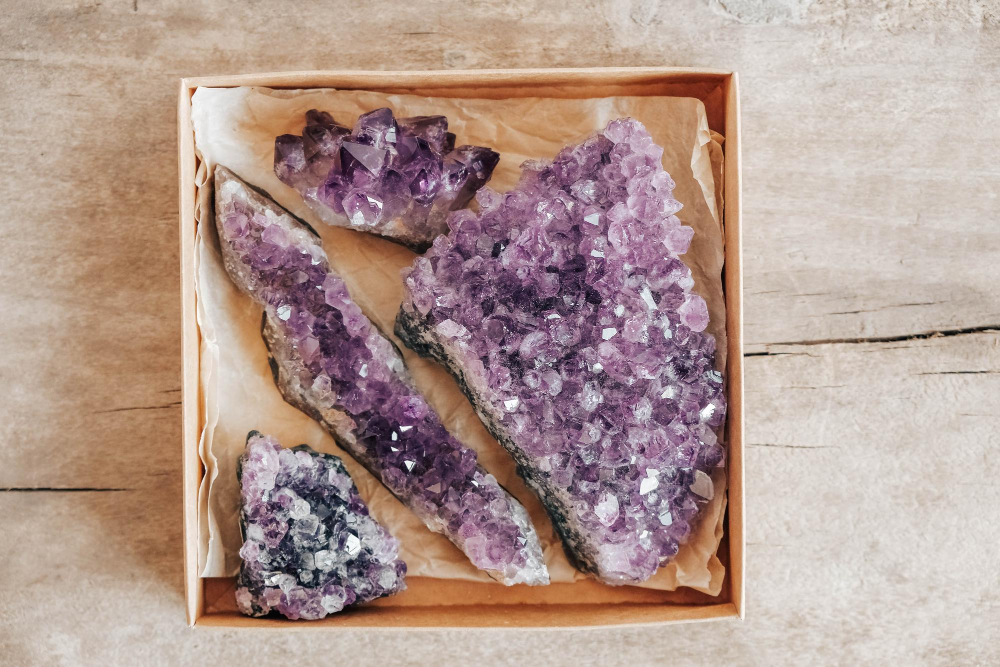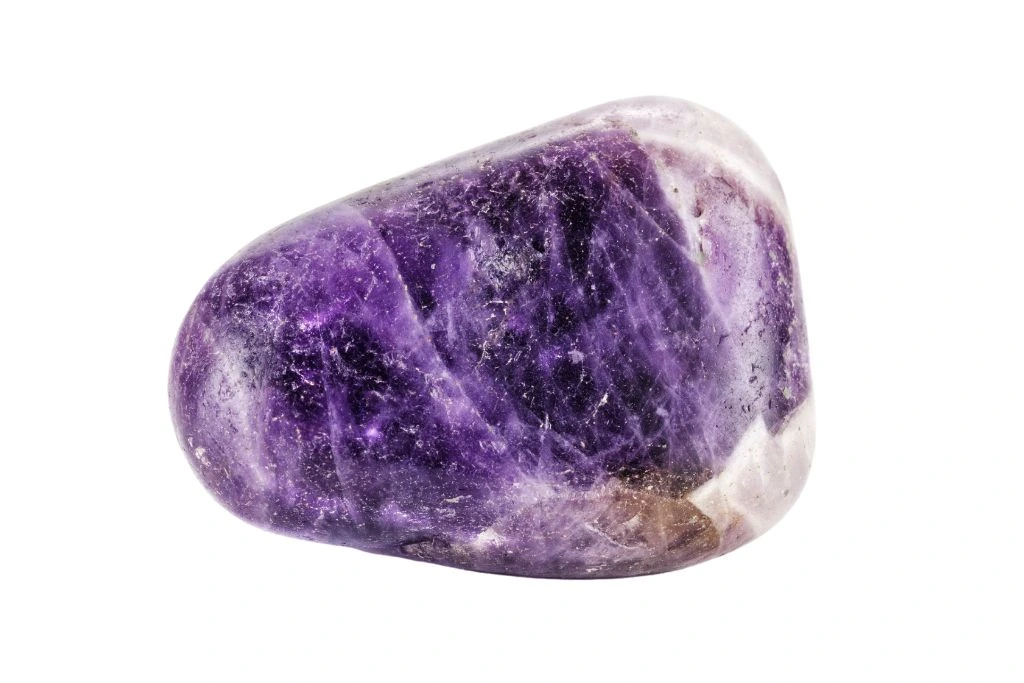The Vibrant Color of Amethyst
Amethyst is renowned for its stunning purple hue, which can range from a light lavender to a deep, rich violet. This captivating color is caused by iron impurities within the crystal structure and exposure to natural radiation. The intensity of the purple can vary within a single specimen, often creating a mesmerizing gradient effect.
Crystal Structure and Formation
As a variety of quartz, amethyst forms in a trigonal crystal system. It typically grows in clusters of pointed crystals, creating beautiful geodes or druzy formations. Individual crystals often exhibit a hexagonal prism shape, with pyramid-like terminations at one or both ends. This distinctive structure contributes to amethyst’s allure and makes it easily recognizable.
Unique Physical Characteristics
One of the most notable features of amethyst is its pleochroism, meaning it can display different colors when viewed from different angles. This optical phenomenon adds depth and complexity to the stone’s appearance. Additionally, amethyst often contains visible inclusions, such as “tiger stripes” or “phantom” formations, which can enhance its visual interest and value.
Clarity and Luster
High-quality amethyst crystals are typically transparent to translucent, with a vitreous or glass-like luster that gives them a brilliant shine. This clarity, combined with its striking color, makes amethyst a popular choice for both jewelry and decorative objects. Some specimens may also exhibit a subtle asterism, creating a star-like effect when cut into cabochons.
Historical and Cultural Significance of Amethyst
Amethyst has been revered throughout history, with its use dating back to ancient civilizations. The Greeks believed it could prevent intoxication, leading to the creation of wine goblets adorned with this purple gem. In medieval Europe, amethyst was associated with royalty and religious figures, often adorning crowns and ecclesiastical rings. Its regal purple hue made it a symbol of power and prestige across various cultures.
Metaphysical Associations
In the realm of metaphysics, amethyst is widely regarded as a powerful spiritual stone. It is believed to enhance intuition, promote clarity of thought, and facilitate meditation. Many consider amethyst a natural tranquilizer, capable of soothing and calming the mind. It is often associated with the crown chakra, thought to open one’s connection to higher consciousness and divine wisdom.
Common Uses and Benefits
Today, amethyst is used in various ways, both for its aesthetic appeal and purported healing properties. In jewelry, it remains a popular choice for its striking color and durability. Crystal enthusiasts use amethyst in meditation practices, placing it on altars or carrying it as a pocket stone. Some believe it aids in overcoming addictions, reduces stress, and promotes better sleep when placed under a pillow. In alternative medicine, amethyst is sometimes used in crystal healing therapies to address issues like headaches, insomnia, and emotional imbalances.
Modern Applications
In recent years, amethyst has found new applications in the wellness industry. It is incorporated into spa treatments, used in crystal-infused water bottles, and featured in home decor as a means of purifying spaces. Some technology companies have even begun using amethyst in products like phone cases, claiming it can help neutralize electromagnetic radiation. While scientific evidence for these benefits is limited, amethyst’s popularity in holistic and New Age circles continues to grow, cementing its status as a versatile and beloved gemstone.


